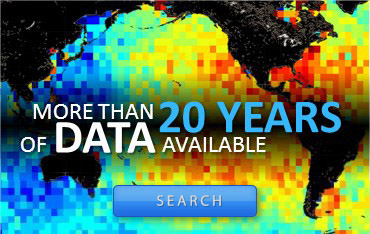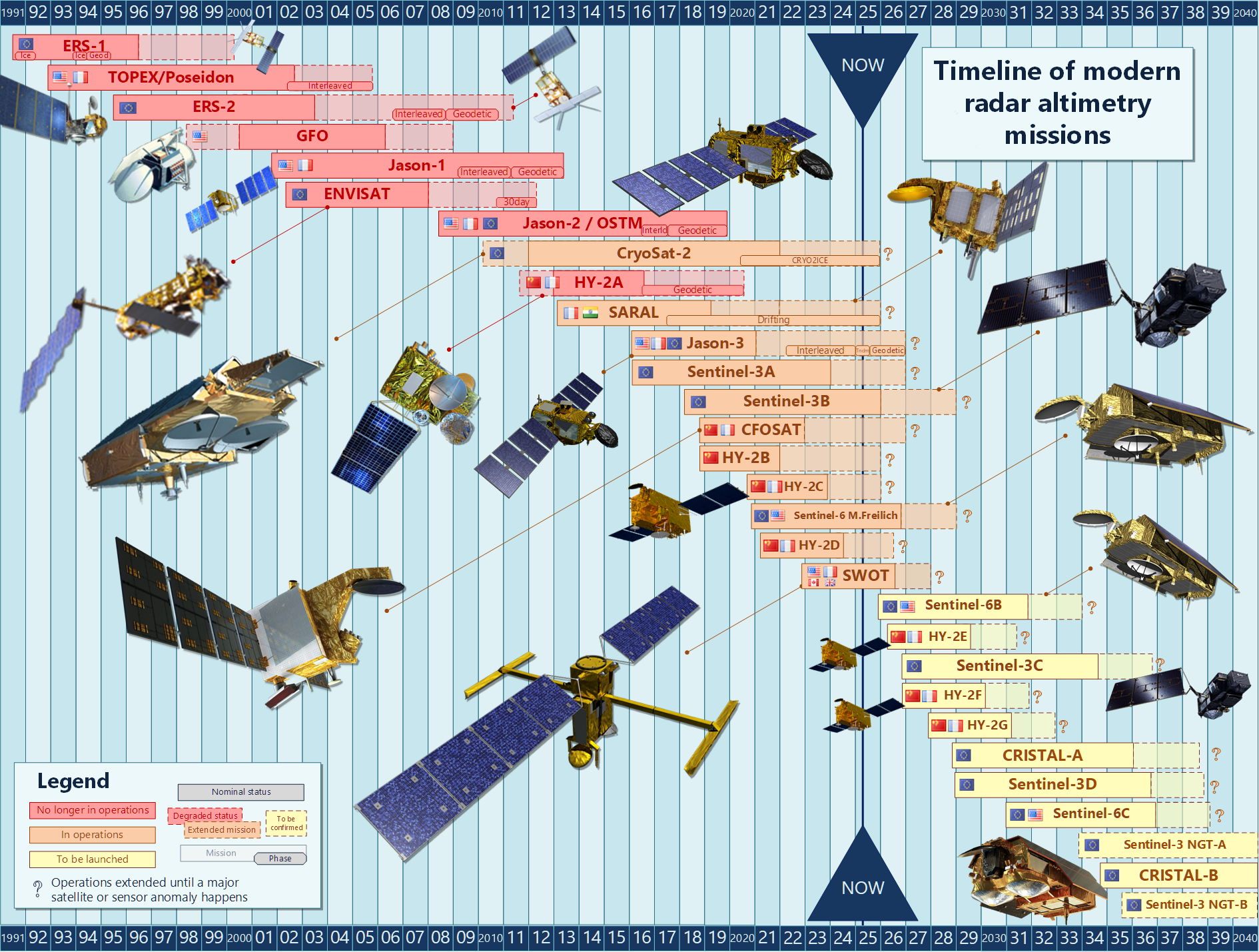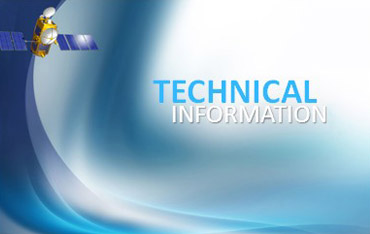Precise Orbit Determination (POD)
The ability to precisely determine a satellite's position on orbit is a key factor in the quality of altimetry data. Besides measurements acquired by the three location systems onboard the satellite, which are cross-calibrated, we now rely on increasingly accurate orbit determination models.
Different products require different levels of accuracy. Data generated within three hours are based on a preliminary orbit from the Diode onboard navigator (Doris). On the other hand, data generated 30 days post acquisition require the most accurate orbit possible and therefore demand more orbit data and more time for calculations.
Expected accuracy on the radial orbit component is 10 cm rms for three-hour data, 4 cm rms for three-day data, and 2.5 cm for 30-day data. The ultimate aim is to achieve centimeter accuracy. Jason's orbit is consistent with that of Topex/Poseidon in terms of the satellite's position, orbit calculation methods, and models.
To reach the goal of an orbit error of just one centimeter, we need a detailed knowledge of the satellite and its variations—due to maneuvers, fuel consumption, solar panel orientation and so on—so that we can model the forces acting on it precisely (attraction, atmospheric drag, etc.). We also need to determine the gravity field very precisely. The geodesy missions (CHAMP, GRACE, and GOCE) help us to improve our understanding of these factors.
Further information:
- OST/ST 2008 meeting: POD/Geoid

















